Animals

Cambodian animals are state property under Article 48 of the Forestry law of 2002. This places the Forestry Administration (FA) in charge of research programs and conservation duties. The FA carries this out through its Department of Wildlife and Biodiversity. Conservation programs in the field lass='cambodia-color'>...
Agricultural commodities, processing and products
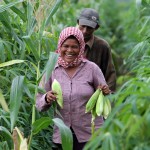
Farmers harvest corn from their farms, Cambodia. Photo by World Bank/Chhor Sokunthea, taken on 17 July 2013. licensed under CC BY-NC-ND 2.0Key agricultural commodities and products include rice, rubber, corn (maize), vegetables and fruit, and cassava (tapioca). More than 90 percent of Cambodia’s agricultural exports lass='cambodia-color'>...
Fish farming and aquaculture
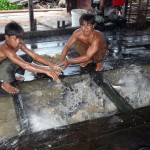
Fish farmers operating cage culture, Cambodia. Photo by O. Joffre/WorldFish, taken on 3 October 2009. licensed under CC BY-NC-ND 2.0.Aquaculture production has grown significantly. In 2012 it stood at 74,000 tonnes, or almost 11 percent of total fishery production. By 2016 it had grown to lass='cambodia-color'>...
Primary and secondary education
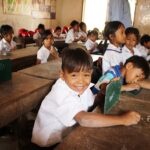
Article 68 of Cambodia’s Constitution states that the Government shall provide free primary and secondary education for all citizens and each individual shall pursue basic education for at least 9 years. Education is a fundamental engine of social and economic development for a country, especially lass='cambodia-color'>...
National government
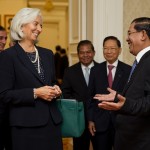
Cambodia is a constitutional monarchy. According to the 1993 Constitution, although he is the head of state, the king has very limited powers compared to the prime minister, the head of the government. Unlike the 1947 Constitution, power does not come from the king but lass='cambodia-color'>...
Private land
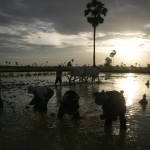
Rights to private land ownership were guaranteed in the 1993 Constitution and formally established by the 2001 land law. Despite an established legal framework to protect private property rights, those rights are often insecure for many. lass='cambodia-color'>...
Plants
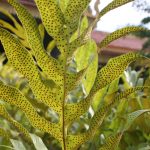
Although there are often new discoveries,146 a global lack of up to date data on botanical research makes plants biodiversity hard to assess in Cambodia. Compared to neighboring countries, the number of plant species is low, mostly due to the relative country’s flat landscape.147 Botanical knowledge lass='cambodia-color'>...
Forest cover
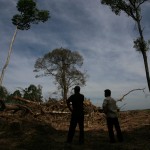
Cambodian forest cover has reduced dramatically in recent decades. In 1973 there were 13.1 million hectares of total forest, but by 2014 the total cover had fallen to 8.7 million hectares. lass='cambodia-color'>...
Coal
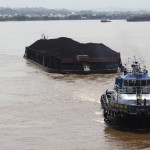
Although exploratory work has indicated the presence of modest coal resources in northern Cambodia, no commercial-scale mining has yet begun. The coal used in electricity generation and for other purposes is imported.A coal barge from Samarinda coal mine on the Mahakam river. Indonesia, Borneo. Photo lass='cambodia-color'>...
Provincial and local governments
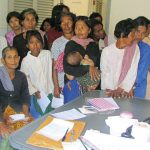
Patients are registered during the outreach screening at Vien Health Center. Photo by Community Eye Health, taken in 2006. licensed under CC BY-NC 2.0The Kingdom of Cambodia is an indivisible state. The country’s administration at all levels and in all sectors falls under the same lass='cambodia-color'>...
Hydropower dams
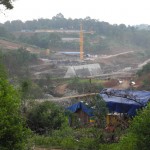
In 2003, a national sector review for hydropower was prepared by the Ministry for Industry, Mines and Energy (now Ministry of Mines and Energy) and the Cambodian National Mekong Committee (CNMC). This report identified 60 possible sites for hydropower development in Cambodia and estimated the lass='cambodia-color'>...
Fishing, fisheries and aquaculture
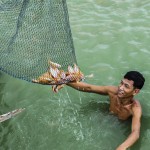
Cambodian fish farmer checking on fish quality. Photo by U.S. Agency for International Development (USAID), taken on 16 October 2012. licensed under CC BY-NC-ND 2.0.Cambodia’s inland capture fisheries are among the largest in the world. The fishing industry encompasses subsistence, commercial and recreational fishing, as lass='cambodia-color'>...
Pollution and waste
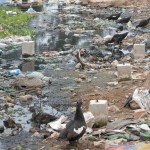
The rapid economic and population growth in Cambodia is leading to significant environmental pollution. The economic development activities have generated major environmental consequences, including air pollution, water pollution, noise pollution and solid wastes. lass='cambodia-color'>...
Energy for transport

In Cambodia, petroleum is traditionally the main source of energy for transportation. The petroleum fuels used for transportation include gasoline, diesel, heavy fuel and fuel oil. lass='cambodia-color'>...
Rivers and lakes
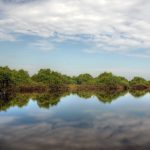
Tonle Sap lake reflections. Photo from Mariusz Kluzniak. Uploaded on 1 January 2012. licensed under CC BY-NC-ND 2.0Despite severe droughts striking the country frequently, Cambodia possesses substantial water resources, mostly contained in the Mekong River and the Tonle Sap great lake and river. The lake lass='cambodia-color'>...
Court monitoring
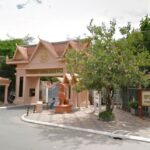
Respect for strong values is the key to citizens’ trust in their courts.300 The international values recognized for judges are independence and impartiality, integrity, equality of treatment, diligence and competence. A judge cannot both decide a case and have a personal interest in its resolution. lass='cambodia-color'>...
Australian aid
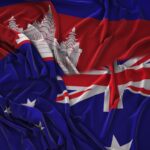
Prime Minister of Australia, The Hon Anthony Albanese MP, and Prime Minister Hun Sen at Gala Dinner for ASEAN Heads of State/Government/Delegation and Spouses, dated 12 November 2022. Photo from Ministry of Foreign Affairs and International Cooperation of Cambodia.Cambodia and Australia established their diplomatic ties lass='cambodia-color'>...
Water pollution
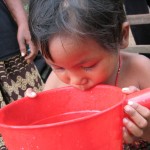
Young child drinks clean water in Cambodia. Photo by Cecilia Snyder, taken on 12 July 2003. licensed under CC BY-NC-ND 2.0Water pollution can be defined in many different ways. Basically, it is the contamination of water when pollutants are discharged into water bodies without treatment lass='cambodia-color'>...
Ministries and other national bodies
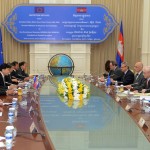
Nearly all of the ministries were established in 1995. A few ministries were only recently created in the post-2013 national election by a separation of one ministry into two. There are 28 government ministries and secretariats, and many national bodies. lass='cambodia-color'>...
Administration
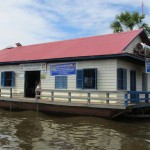
Cambodia’s sub-national administration consists of three tiers: capital city/province, municipality/district and sangkat/commune. Phnom Penh is the capital, and there are 24 provinces, 159 districts (including 26 municipalities and 12 khans), 1406 communes and 227 sangkats. lass='cambodia-color'>...



